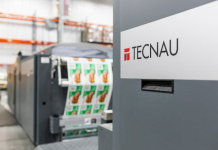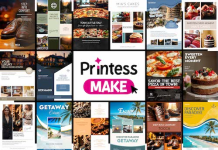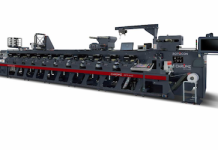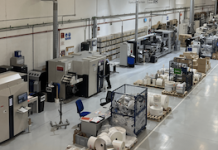Are we concerned about the future of the packaging sector? We face a growing amount of challenges and our future remains increasingly unpredictable. Can we rely on the government's National Development Plan (NDP) to grow our business and sector?
Yesterday things were simpler, we were production, not market driven. An example is Henry Ford, who said, 'you can have any colour car you want as long as it's black'. Now we ask customers what they want. We also relied on tariff and duties to protect our industry and we had insignificant international competition.
Today's buyers are more professional, discerning and demanding. There are also greater demands on manufacturers, whereas in the past it was a less competitive environment. People weren't worried about being efficient, but if you're not efficient today, your business is doomed.
There was inefficient domestic competition and less emphasis on pricing and we relied heavily on personal selling – there were long lead times and customers were generally sympathetic and gave you a 'second chance'.
Today's challenges include:
• Political instability and security concerns.
• Poor business confidence.
• Fluctuating exchange rates.
• Global and domestic recession.
• Expensive cost of capital.
• Increased legislation and compliance costs. South African companies have to comply with various taxes, including VAT, FICA, CIPC regulations, labour issues, toll roads, etc.
• Unfavourable trade policies. There are a variety of incentives in place but not enough to really stimulate local manufacturing.
• Shortage of skills and poor productivity.
• Lack of entrepreneurship. The government is not doing enough to encourage entrepreneurship and to make it simple for people to start businesses. It is almost impossible to start a business with considerations such as taxes and legislation and registering for VAT.
• Aggressive international competition.
• Electricity issues.
• Diminishing economies of scale. Our volumes tend to be low yet we are benchmarked against products that are mass produced. Consumers are also fussy – we're a country with a great deal of choices but we produce low volumes so we are too small to be competitive.
• Less personal influence with the emergence of e-tendering and e-procurement. There's often no opportunity to engage with people to sell your service as tenders are now done on computers. Often the business that offers the lowest price is chosen, without consideration given to great service, etc.
• Efficient domestic competition.
• Faultless quality and service expectation.
• Pricing and margin distress.
• Lack of R&D, because it's unaffordable, and that impacts our ability to be innovative.
• Much more discerning customers.
• Shareholder pressure resulting in businesses becoming increasingly short-term focussed.
The NDP objectives for 2030 include the following:
• Annual GDP will grow from less than 2% today to 5.4%.
• Our economy will be three times larger than in 2013.
• Unemployment will fall from 25% to 6%.
• South Africans will earn more than twice the present level of R50K per annum.
• Trade with our regional neighbours will increase from 15% to 30% of total trade.
• Agricultural land will increase from 1.5 to 2 million hectares. An additional one million jobs will be created in this sector.
• Installed electricity capacity will increase from 44 to 73KMW and more than 90% of South Africa will have access to electricity.
• University enrollment will increase by 70%.
• Average life expectancy will be more than 70 years.
The plan is intended to grow our economy and give the consumer increased wealth and spending power. Successful implementation would no doubt significantly increase our annual per capita consumption of packaging from around 65kg to much higher. However, its becoming increasingly unlikely that we can rely on the successful implementation of the NDP. Some good news is that the International Monetary Fund projects that Africa will be the world's fastest growing region from now to 2020.
The question is: are we experiencing a crisis, and if so, what do we need to do differently in order to grow and survive? The industry needs to understand the drivers, be more innovative, identify opportunities and threats and adapt accordingly, and invest properly.
10 of the key drivers are:
1. Changing demographics
• People are living a lot longer – 'ageing baby boomers'.
• Single parent families are common and people are having fewer children.
• There is a rapidly emerging black middle class.
• We need to consider the impact of millennials, who are increasingly aware of world trends.
2. Sustainability and the environment
This has to be part of every businesses' agenda as those that ignore this are unlikely to survive. Products are often over-packaged, including too much secondary packaging and with the growing concern about packaging waste, the key element is to do more with less.
There is a multitude of legislation in existence and more is coming, so it is important to reduce your carbon footprint and real action is required with this, not 'greenwashing'.
3. Convenience
It's all about time, or simply the lack of it. People want their food 'On-the-Go', and the packaging needs to change accordingly. We are seeing more single serve or portion meals that are quick to prepare and are microwave friendly. Consumers can now buy, cook and serve a meal in the same packaging.
4. Beating the counterfeiters
Every successful brand is at risk and will be copied. You need to ensure that packaging is as difficult to copy as possible, using overt and covert technologies, like barcodes/special markings that can only be seen under UV or Infrared light.
5. Biodegradable and bio-based polymers
• Markets and consumers are looking for eco-friendly alternatives to ordinary plastics.
• Fossil fuels (oil) resources are finite.
• There are alternatives to conventional feedstocks.
• There is a growing demand for biodegradable plastics.
• The demand is forecast to grow at 29% per annum over the next five years.
• These materials still have recycling limitations.
6. Tamper evidence
There is no legislation that forces companies, such as those who manufacture baby food, to have tamper-evident packaging but it is critical as brands can be destroyed through tampering and sabotage. A prominent example is the brand Tylenol, where the product was laced with potassium cyanide. Due to lack of tamper evident packaging, the packs were opened without detection, the product laced with poison and the bottle put back on the shop shelf.
7. Digital printing
This opens up a multitude of opportunities for packaging as it allows for customised or individually personalised packs that have great consumer impact. It gives designers flexibility in that designs, names, fonts, etc. can be quickly changed and stored on a computer. A famous example is the Coca-Cola campaign, which allowed consumers to choose a bottle with their names printed on.
Digital printing is also an eco-friendly process as no harmful solvents are used and it provides quick turnaround times with no mess and changing of plates.
8. Pouches
• Flexible pouches are forecast to grow faster than any other form of packaging and stand-up pouches with spouts will take market share away from glass and plastic containers.
• Significant in-bound logistics advantages.
• 360 degree decoration possibilities.
• Extended shelf life opportunities.
• However, there are recycling concerns.
9. Tackling food waste
According to the CSIR, approximately 10m tonnes per annum is wasted in South Africa at an estimated cost of around R60 billion and around one third of all food produced worldwide is wasted. Packaging can help reduce this by:
• Preserving the contents and reducing damage between 'farm and fork'.
• Preventing contamination from dirt, spillage, etc.
• Protecting from climatic conditions, ie, water and heat.
• Minimising theft and pilferage.
• The emergence of ethylene inhibitors, anti-microbial and anti-fungal additives and other shelf-extension technologies, most of which can be incorporated into the packaging.
10. Innovation
We have seen the emergence of innovative, smart, active and intelligent packaging such as e-packaging, odour absorbers, temperature responsive packages, flavour releasers, physical damage indicators, freshness/ripeness indicators, self heating containers, active pharmaceutical reminders, bio-active packaging and moisture control/indicators.
Packaging must activate the emotions – it needs to delight and appeal to all the senses. Most importantly, it must grab the consumer's attention. It's worth remembering that packaging is an important factor driving decisions to purchase – 41% of respondents said packaging is an important attribute, while 36% said they tried new brands because the packaging enticed them. However, only 10% of consumers are completely satisfied with the packaging they come across. Source: MeadWestvaco 2014.
Today, companies are harnessing smart phone technology, such as with e-packaging in tamper evidence where a thin printed electronic film tag adheres to the side of the container and extends through to the closure. It sends a signal to a smart phone should the seal be broken. It can also be used for imparting messages to the consumer. KFC Canada released a limited edition 'memories' bucket that contains a blue-tooth enabled printer embedded in the base of the bucket. Users can link their smart phones to the bucket and print a photo of their choice.
There is also intelligent packaging that contains light emitting devices that signal when best before labels have reached their expiration date as well as freshness indicators where the carton changes colour as shelf life is reached or as the products start to go off. Temperature indicators and special bottle coatings whose super slippery surface allows for the complete emptying of bottles are also innovative.
To minimise the impact of the crisis in packaging, the industry needs to understand the drivers; innovate; stay informed on global trends and technologies; foster international alliances with 'best in class' manufacturers and experts; create value in shifting away from a cost driven mentality to a benefit driven offering; make use of state incentives such as Department of Trade and Industry and Industrial Development Corporation grants and loans; train, develop and up-skill people and invest wisely. So ask yourself: will you identify the opportunities that arise or will you disappear into oblivion?





















